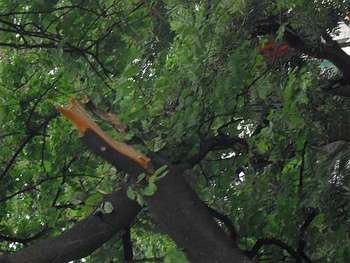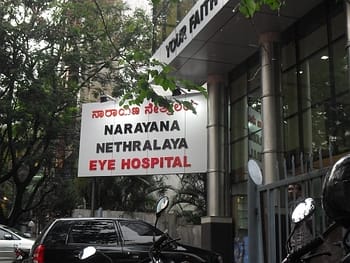It was World Environment Day last week and India had the honour of hosting the International World Environment Day 2011 for the very first time. Jairam Ramesh, our erudite and enthusiastic environment minister called trees ‘water pumps’ and paradoxically the event was devoted to ‘Forests: Nature at your service’.
As a media fellow of UNEP, I was proud to sit in the audience and listen to the minister tell the world that India was among the developing nations working towards addressing the pressures of ecological change. He told us about India’s Rural Employment Act and the country’s encouragement of renewable energy use to scale up green growth.
In a media session, I brought up the shame of the felling hundreds of ancient trees in Bangalore in the name of infrastructure works. Was there a policy in place to replant and nuture the trees that had been felled? I also asked Ramesh about the spiralling levels of pollution in Bangalore and how was it that Delhi was so much cleaner than I remembered when I visited 10 years previously? CNG was the secret. Then why can’t our policy makers do the same here rather than having an asthmatic wheezing population growing every day?

The tree’s main branches were hacked. Pic: Marianne de Nazareth.
Far away down south in Bangalore, a tree planted by me and my baby sons 15 years ago was being decimated and mutilated on Castle Street at that very moment. The beautiful spreading branches of the Camel Foot tree we had planted and nurtured, was obstructing the view of the huge name board of Netralaya Mantralaya which had just opened its hospital doors.
“Madam, the tree is not letting us to have a grand opening of our hospital, so I have trimmed it,” said the contractor, to the massive felling of half the tree.
Dr Bhujang Shetty, the eye surgeon whose hospital it is, refused to comment and just laughed off my complaint.
Krishnappa, the Deputy Forest Conservator of the BBMP said, “Do you have photos to prove it was cut by the hospital? If you do not have photos and you do not make a written complaint, there is no proof that they did it and we cannot take action! Do what you want!”
In desperation I called Dr M H Swaminath who is the Additional Principal Chief Conservator of Forest Resource Management. “Are you saying they have already cut the branches?” he asked. I replied in the affirmative and said I had pictures of the branches thrown in the garbage dump a little further up the road.
“I will immediately take action, Madam,” he said and promised to get to Krishnappa about filing a case against the hospital about the damage done.

Pic: Marianne de Nazareth.
I have no idea if anything will be done. It is indeed a shame that Bangalore steps back and allows this vandalism in the name of progress. A tree saves us from the dust bowl Bangalore has become and if a hospital cannot understand that God help us all.
‘Green Delhi’ was the martial cry in the capital and the tree cover I saw was phenomenal. What do we in Bangalore have to say in response? Can we ever green Bangalore the Delhi way? We were the garden city once upon a time. We need stricter laws and many more Dr Swaminath’s who will respond when we call. And we do need citizens who will act to help our silent tree friends who are being mercilesslyfelled and destroyed.
UNEP Chief Mr Achim Steiner said, “ A tree standing has more value than a tree cut. Development must work with nature and not against it.”
So save our trees if you can help them is my earnest appeal. They clean up our pollution for free. If we understand the enormity of the job they do for us, we would all rise up in arms to have a cleaner, greener and more healthy Bangalore. ⊕
A worse crime was committed on 18th Cross, Malleswaram, about a year ago by Vagus Super Speciality hospital. Three beautiful Gulmohar trees were distroyed – and all evidence of their existance has vanished – simply to provide parking space in front of the hospital ( on what should be a footpath ). Ironically about 200 metres down the road from this hospital is the Forrest Department. In fact, I fear that all the trees on 18th Cross will be hacked in the name of development. Whenever a new building is built they think they have the right to kill the trees in front of their property – and all over Bangalore this is happening – old buildings being demolished and new ones coming up. Earlier their would be a substantial setback – now they build as close to the road as possible – and kill all the trees on the footpath and in the property as well.
We need to fight Ramesh. Fight for our trees from these so called Doctors and hospitals who don’t really care for our health.
I believe in the power of a group of like minded residents. Band some together and go to the department and file a complaint. It is only when that is done will they stay away from the rest of the trees on your road.
Even just a single complaint – yours – will make them sit up and realise they are being watched.
The doc should be given a black eye!
Well we all know how efficient the forest dept is. We should make ourselves heard and register complaints every time a tree has been cut down. It’s worse when the keepers of health who really don’t care a damn about anyone’s health perpetrate such acts.
Sometimes one wonders about doctors – they make their living from the suffering of others.
Here is a wonderful example of a negligent doctor for us.
The BBMP has put how HUGE ads about how we must look after and save our trees. For whose benefit is that I wonder?
Instances like these should be punishable by law. The doctor would have paid the forest dept and got away scot free.
Who will replace this tree for Bangalore? The BBMP?
We are part of the fight to save the Sankey Road trees- my wife, family and me. Is the BBMP listening to us?